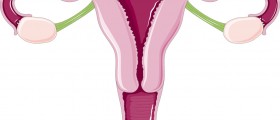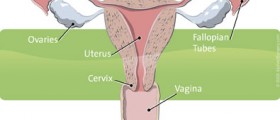
According to the experts, a uterine fibroid is considered to be the most common non-cancerous or benign tumor of a woman’s uterus or womb. These tumors are found in the smooth muscle which is located in the wall of the uterus. The tumor can either develop within the uterine wall or become attached to it. In some cases this tumor will grow on its own but in other cases it may grow in clusters. There are a lot of complications which a person may experience due to uterine fibroids and excessive menstrual bleeding, pelvic pain and frequent urination are only some of them.
Benign tumors in woman’s uterus
The doctors and patients do not have an easy task when it comes to diagnosis uterine fibroids. The main reason why that is so, is because they do not cause any symptoms in most cases. A woman is most commonly diagnosed with the condition when she goes in for a regular pelvic exam. However, there are certain symptoms which can be seen in some cases. The most commonly seen symptoms of uterine fibroids are irregular vaginal bleeding or an increase in menstrual bleeding. The second symptom is also known as menorrhagia and in some cases there are blood clots present as well. Apart from these two, there are several more signs and symptoms which a woman may experience such as frequent urination and a sense of urgency to urinate due to pressure on the bladder. In rare cases a woman may experience the inability urinate. Constipation is another sign of uterine fibroid which occurs due to pressure on the rectum. Lower abdominal pain may also occur due to pelvic pressure. A discovered pelvic mass and infertility are considered to be the signs of this condition as well. Increase in size around the waist and certain changes in abdominal contour are also signs of uterine fibroids which may occur.
Causes of uterine fibroids
When growth patterns of uterine fibroids are considered, the experts claim that they vary. Some tend to grow slow while others will not grow at all and even become slightly smaller in size. The smallest fibroids cannot be seen by the human eye while in some cases they grow so large that they distort and enlarge the uterus. Even though the cases where the fibroids have reached the rib cage are almost never seen, they are possible. The doctors are still unsure what the actual causes of these fibroids are but there are some factors which are considered to be very important. Genetic alternations are the first factor because lots of fibroids are known to contain alterations in the genes. These alterations are not the same as those seen in normal uterine muscle cells. Hormones are the second factor, especially estrogen and progesterone. According to the experts, fibroids are known to contain more receptors of these two hormones than other normal uterine muscle cells.Apart from these two factors, there are certain other chemicals that help the body maintain tissues which may affect the growth of fibroids. Just like with almost all other health conditions there are certain risk factors which increase the chance of suffering from the condition. There are not that many known risk factors of uterine fibroids. The only sure risk factor is a woman being or reproductive age. Apart from this one, heredity is another risk factor and if someone in the family has fibroids, than all the other women in the family are at increased risk as well. Black women are also more likely to fibroids than women of other racial groups. On the other hand, pregnancy and childbirth are considered to have a decreasing effect on the risk of developing fibroids. The doctors believe that pregnancy and childbirth have a protective effect.
Outlook in uterine fibroids
According to the data, between 20 and 40% of women experiences problems with leiomyoma. However, the good thing is that the actual treatment is needed in only a small number of cases. The data also claims that black women have twice as much chance of developing the condition. Obese women are also more prone to uterine fibroids than women of normal weight. The data claims that almost 80% of all African American women will experience problems with uterine fibroid when they reach their late 40s. According to the experts, the fibroids occur at African American women when they are younger and grow a lot faster than in Caucasian women. However, the experts are still unsure why the fibroids are more common in African American women but certain speculations exist. One woman out of 1000 will experience her lesions to become malignant. A growth after menopause is the one of the surest signs that the lesion has become malignant. According to the data in America, uterine fibroids are the leading cause of hysterectomy, which is the removal of the uterus. Every year there are more than 600,000 hysterectomies being performed.
















Your thoughts on this
Loading...